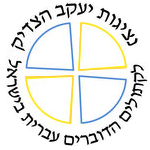Behold the Man: Jesus in Israeli Art
On December 20, 2016, a new exhibition was opened at the Israel Museum, entitled: “Behold the Man: Jesus in Israeli Art”.
![]()
![]()
The Israeli and Jewish artists represented in the exhibition are: Maurizio Gottlieb, Marc Chagal, A. M. Lillien, Reuben Rubin, Yigal Tomarkin, Moshe Gershuni, Motti Mizrahi, Menashe Kadishman, Michal Neeman, Adi Nes, Sigalit Landau and others. The curator of the exhibition is Amitai Mendelson, who wrote his doctoral dissertation on the same subject.
The preoccupation with the figure of Jesus in Jewish and Israeli art – from the 19 th century until today – expresses complex questions about collective and personal identity. The exhibition, based upon a profound and long term study, represents the meaningful, surprising and sometimes provocative description of Jesus: Jewish artists who worked in the shadow of the cross and saw in Jesus the suffering and persecuted Jew, Israeli artists who saw in the resurrection from the dead a symbol of the Zionist resurrection in the Land of Israel, those who saw in Jesus the symbol of the solitary artist struggling against the establishment, or those who sought to represent the victim, soldiers sacrificed on the altar of the nation or the Palestinian victim.
![]()
The exhibition reveals the surprising presence of the figure of Jesus in Jewish and Israeli art over the past 150 years. As opposed to the perception that sees Jesus as the main figure responsible for the persecution of Jews in the name of Christianity, the all inclusive exhibition throws surprising and new light on the character of Jesus as a source of expression and creativity in the work of renowned artists, from Marc Chagal until Adi Nes. Beginning from the 19th century, Jewish artists also adopted the figure of Jesus as representing an accusation against an anti Semitic Church and as a symbol of Jewish suffering in general and of the Shoah in particular. Zionist artists at the beginning of the 20th century, like Reuben Rubin, linked the resurrection from the dead with the resurrection if the Jewish people in its land. Israeli artists, after the establishment of the State of Israel, saw in Jesus a symbol of the one who fought against the establishment and was crucified for his opinions. Others saw in Jesus the model of the suffering artist and in the socio-political context, his figure is evoked in works that deal with the Israeli-Palestinian conflict.
The figure of Jesus appears in the works in the exhibition in both explicit and implicit ways. The painting of Maurizio Gottlieb, “Jesus preaching in Capernaum”, from the end of the 19th century, is from the National Museum in Warsaw. In it Jesus is seen wrapped in a prayer shawl, preaching before the large congregation in the synagogue. From the Mseum of the Pompidou Center in Paris there is the painting of Chagal “Yellow Crucifixion”. The painting is from 1942, at the height of the Second World War, and in it Jesus is seen with the halo of a Christian saint and wearing phylacteries. More than half a century later, Adi Nes photographed a group of soldiers in a composition that reminds one of the Last Supper of Leonardo Da Vinci, a photograph that became a turning point in Israeli art. In a video piece, Sigalit Landau closes the exhibition with the image of the artist standing on a watermelon in the Dead Sea, evoking the descriptions of Mary with Jesus standing on the globe of the earth, with her hands stretched out to the sides, recalling the cross. During the research behind the exhibition it was discovered that the lamb in the paintings of Menashe Kadishman create a strong connection to the iconic figure of Jesus as it was painted in the Middle Ages as well as to the ancient symbol of Jesus represented as a lamb, the ultimate sacrifice.
![]()











 The Pope Expresses His Closeness to the Suffering Israelis and Palestinians
The Pope Expresses His Closeness to the Suffering Israelis and Palestinians Cardinal Parolin Visits Israeli Embassy to Holy See
Cardinal Parolin Visits Israeli Embassy to Holy See Bishops of Poland Express Their Solidarity with Israel
Bishops of Poland Express Their Solidarity with Israel Vicar's Call for a Prayer for Peace
Vicar's Call for a Prayer for Peace Mayor of New York City in Jerusalem Meets Religious Leaders
Mayor of New York City in Jerusalem Meets Religious Leaders Israeli President Reaffirms Commitment to Defend Religious Freedom
Israeli President Reaffirms Commitment to Defend Religious Freedom Revealing History: A Fresh Perspective on Catholics and Jews in WW2
Revealing History: A Fresh Perspective on Catholics and Jews in WW2